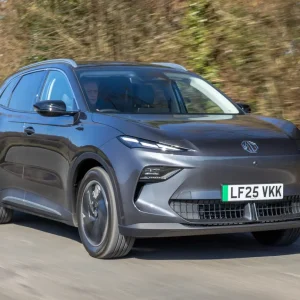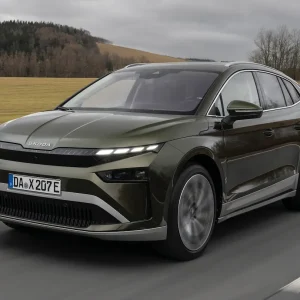The Fiat 500 is part of the reason the company has survived so long. In a precarious position only 15 years ago, the launch of the reinvented 500 in 2007 – recapturing the charm of the 1957 original – set Fiat on a path to recovery to become one of the big players in the global automotive landscape only a few years later.
For me, the 500 is cramped and uncomfortable but, despite that, a hard car to dislike. And it still has appeal. Revised in 2016, this generation 500 is still in production, now with mild hybrid petrol engines, and Fiat says it will continue for a few more years.
It’s eventual successor is now on sale in the 500e. While it retains the same basic styling cues of its predecessor, it’s an entirely new car designed to be electric.
Fiat expects most buyers to choose the 42kWh battery version, offering a WLTP range of 199 miles, although there is a 24kWh version offering 118 miles of range in the entry-level Action grade, and priced at £20,495 after the £3,000 plug-in car grant is applied.
It’s a £3,500 increase to step up to the more powerful and longer range version in Passion grade, with the higher equipment of the Icon placed at a further £1,500 premium. The launch edition La Prima is priced £2,000 higher still, taking account of the extra standard kit.
Convertible versions (not available in the entry-level Action grade), with a full-length electrically retractable canvas sunroof, are priced £1,200 higher than the hatchback.
While recognisable as a Fiat 500, it is larger than its petrol-fuelled counterpart, being 6cm wider as well as 6cm longer, while the wheelbase has grown by 2cm. This doesn’t make it particularly more roomy inside, but clearly that never really hampered sales before. Minimum luggage capacity remains the same as for petrol versions at 185 litres, with slightly less for convertible versions. There is also no Fiat badge – the front has a stylised ‘500’ logo.
While the interior is completely redesigned, there are some references to the 1957 original and, when specified with the large dashboard screen, it echoes the old car’s rear-view mirror position mounted on top.
A 7.4kW home wall-box can charge the car to full capacity in around six hours.
Driving in the default ‘normal’ mode feels most like driving an internal combustion engine car. Both 95hp and 118hp versions offer 220Nm (162lb-ft) of torque instantaneously, however, which might result in acceleration that surprises anyone used to a petrol or diesel small car.
Selecting ‘range’ mode increases the level of harvesting energy when lifting off the accelerator, slowing the car down and requiring less use of the brake pedal. Often called ‘one-pedal driving’, it means more energy is being returned to the battery when slowing down, allowing a greater travelling range between charges.
When remaining range is low, ‘sherpa’ mode can be engaged to optimise the available resources to ensure the destination is reached. Sherpa works on several components to ensure either the destination set on the navigation system or the nearest charging station is reached while the car still has enough charge.
This generation of 500 also comes with the choice of greater safety technology than its predecessors, including some semi-autonomous driver assistance features.
It’s an enjoyable drive, and feels a generation ahead of models such as the Smart Fortwo and Volkswagen E-Up, with which it competes at the entry level. It also manages to appeal to style-conscious small EV drivers interested in the Mini Electric and Honda E, while appearing to be better value.
Fiat 500e Icon
P11D: £27,940
Residual value: 39.9%
Depreciation: £14,302
Fuel: £1,459
Service, maintenance and repair: £1,693
Cost per mile: 29.1p
Range: 199 miles
CO2 (BIK %): 0g/km (1%)
BIK 20/40% a month: £5/£9
Luggage capacity: 185 litres
Engine size/power: 42kWh/118hp





